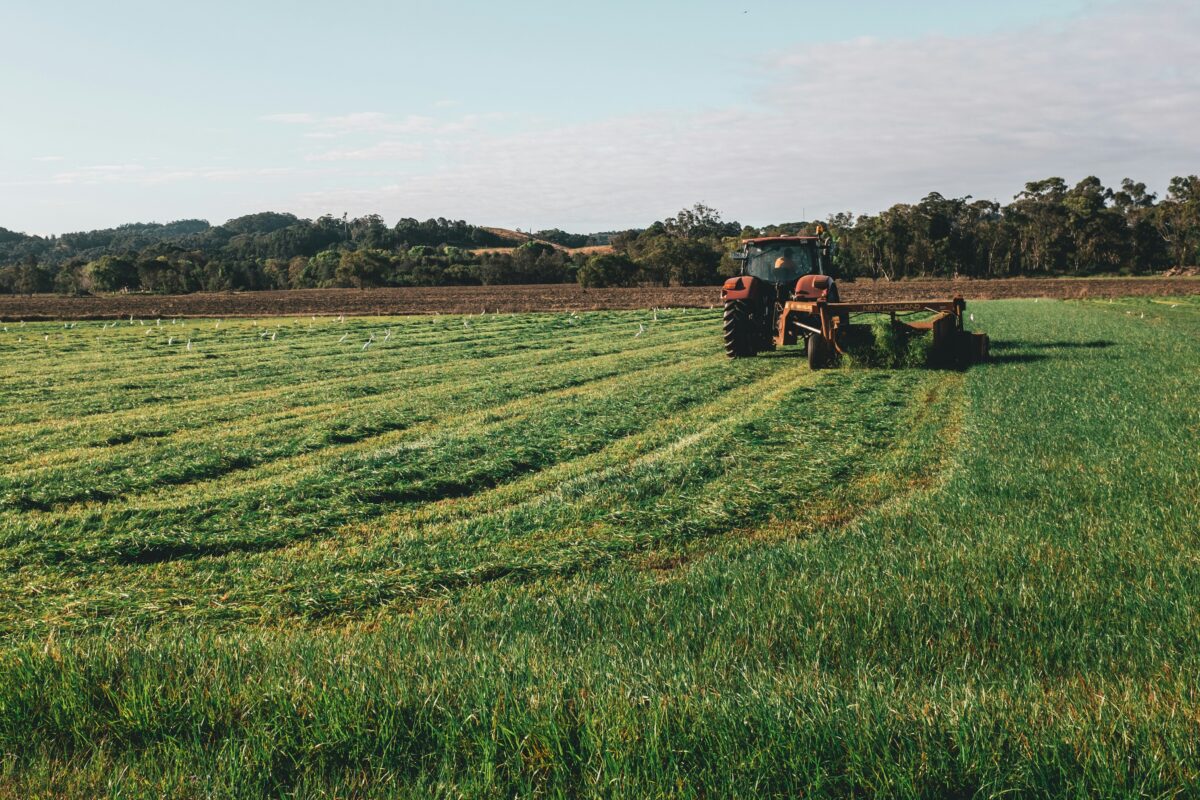The agricultural revolution introduced new ways to support a greater and healthier human population. The revolution also spurred a series of events that led humans to exploit and harm the environment, specifically soil. Soil plays a significant role in the biogeochemical cycles of carbon, nitrogen, phosphorus, and sulfur by storing, releasing, and transforming these nutrients into resources for surrounding vegetation. Through these processes, soil fertility and organic matter content are regulated. Despite this importance, humans are degrading soil at an alarming rate through agricultural practices, such as over-tilling, and are consequently releasing previously-stored carbon back into the atmosphere.
A major factor in the acceleration of anthropogenic climate change is the emission of carbon dioxide. Carbon enters the soil through decomposition, aggregation, and photosynthesis, along with other processes. Once the carbon enters the ecosystem, it is stored in the vegetation, roots, foliage, and soil. The organic matter binds the soil together and maintains its integrity which allows for a healthy ecosystem and substantial carbon storage. Since soil sequesters a considerable portion of the carbon and acts as a storage system, it counteracts portions of anthropogenic pollution. As Renee Cho of Columbia University writes, “the Earth’s soils contain about 2,500 gigatons of carbon—that’s more than 3 times the amount of carbon in the atmosphere and 4 times the amount stored in all living plants and animals.” The integrity of this carbon storage system only endures when the ecosystem, vegetation, and soil remain relatively undisturbed. If the carbon cannot be stored properly, it goes back out into the atmosphere. Due to agricultural and urbanization processes, soil has lost 50% to 70% of its carbon content.
Tilling is the agricultural practice of cultivating land for crops, oftentimes with the use of plows and rakes to clear the land of remnants and debris from the previous harvest. Through the process of tilling, organic matter that binds the soil together is lost. With the loss of organic matter, the overall soil ecosystem is damaged and the carbon cycle is disturbed. When farmers continuously till their land, termed over-tilling, this sequence of soil damage is amplified and further impacts the carbon cycle. Thus, when farmers over-till their land, the disturbed soil and uprooted vegetation releases carbon back into the atmosphere, increasing greenhouse gas concentrations.
Understanding that agriculture is necessary for human well-being, tilling and other agricultural practices cannot outright be terminated. Therefore, more conservative tilling alternatives have arisen to meet the needs of humanity while still respecting nature. One alternative is ridge tillage, which utilizes planters and cultivators in order to maintain rows of “ridges” in which crops are planted for each harvest. After the harvest, the remnants from the crops remain until the farmers create a narrow slit on the ridges to plant the seeds. Sullivan writes,“the equipment must accurately reshape the ridge, clean away crop residue, plant in the ridge center, and leave a viable seedbed.” If any of these steps are not completed correctly, then the crops and harvest might fail. While ridge tillage requires a substantial amount of time and capital, it also protects soil integrity and carbon storage capabilities.
Another alternative to tilling, termed no-till, attempts to conserve soil integrity to support soil and crop health. The title “no-tillage” is slightly misleading as it does not mean that there is no cultivation of the land. Generally, no-tilling refers to the practice of tilling the land sustainability with no heavy machinery like plows and rakes. In this way, farmers are still capable of preparing their land for planting, but also protect the health of their soil. Thus, no-tillage supports better soil quality and protects its carbon storage capabilities. In some cases, this alternative takes a few more years to demonstrate positive results as the biodiversity gradually returns after the land’s former exploitation. However, the long-term benefits of switching to this alternative outweigh the short-term negative of waiting for results.
Conor and Kate Crickmore of Neversink Farm are sustainable farmers that exemplify the positive result of no-tillage. The Crickmore’s focus both on cultivating the land for crops and cultivating a healthy relationship with the soil. The results of their sustainable farming stand alone, with the farm producing 75 different vegetable varieties on only 1.3 acres of land. This production is possible because of their dedication to maintaining a no-tillage farm with healthy soil. Their land conservation rewards them with a fruitful harvest, but also benefits the carbon cycle and sequestration capabilities of the soil — a “win-win” situation.
Overall, over-tilling poses greater issues within large-scale agricultural practices and many smaller farms have been able to maintain a healthy relationship with their soil without over-tilling. For example, many indigenous and native communities throughout the world, prior to and persisting after colonization, produce agricultural goods without adversely affecting their land by tilling. As indigenous farmer Vena A-dae Romero says, “Indigenous people are as much part of the land as the land is part of us. We cultivate the land while the land cultivates us. This relationship that has supported my people since time immemorial is remembered daily when we place our fingers in the dirt, pull the weeds from our fields, or plant our seeds with water, prayer, and hope, cook the food which we grow, and ingest the world with each bite of food we eat.” Perhaps, redirecting our over-tilling to more conservative alternatives is not enough and the world should also focus on fostering a healthier relationship between humans, soil, and nature as a whole.
Sources:
Al-Kaisi, M. Impact of Tillage and Crop Rotation Systems on Carbon Sequestration. Iowa State University. https://store.extension.iastate.edu/Product/Impact-of-Tillage-Crop-Rotation-Systems-on-Soil-Carbon-Sequestration-PDF
Cho, R. (2018, February 21). Can Soil Help Combat Climate Change? State of the Planet. https://blogs.ei.columbia.edu/2018/02/21/can-soil-help-combat-climate-change/#:~:text=The%20Earth%27s%20soils%20contain%20about,all%20living%20plants%20and%20animals.
Organic Produce Network. (2020, July 2). Grower Spotlight: Neversink Farm. https://www.organicproducenetwork.com/article/1096/grower-spotlight-neversink-farm
Pace, K. (2015, October 7). Indigenous agriculture and sustainable food. https://sustainablefoodcenter.org/latest/gardening/indigenous-agriculture-and-sustainable-food.
Schahczenski, J., & Hill, H. (2009). Agriculture, Climate Change, and Carbon Sequestration. National Sustainable Agriculture Information Service. https://www.nrcs.usda.gov/Internet/FSE_DOCUMENTS/nrcs141p2_002437.pdf
Sullivan, P. (2003, July). Conservation Tillage. Appropriate Technology Transfer for Rural Areas. https://attra.ncat.org/product/conservation-tillage

